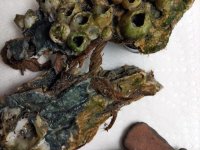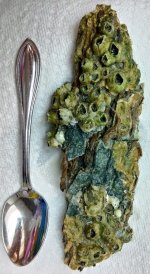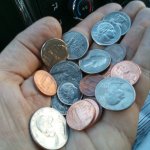PetesPockets55
Bronze Member
- Apr 18, 2013
- 1,653
- 2,917
- Detector(s) used
- AT MAX & Carrot, Nokta Pulse Dice (:
- Primary Interest:
- All Treasure Hunting
I'm not sure how to ask this, but does anyone here know if there are any known twisted fibers from NA sites that exist?
I was walking our local brackish riverbank today with some buddies and came across a piece of material with old barnacles and juvenile oysters on it. It looked different than the other NA shards at this site but because of the size of it (+-7'x2.5") and the edge looked interesting, I tried to break a small piece off. It broke in the middle of course but wouldn't come apart.

I realized I could see twisted fibers inside the "matrix" that were running parallel to each other. When taking the images, I also noticed parallel grooves on the outside that seemed to be indicating many rows of the fibers. I can't tell if there are any intersecting fibers connecting the parallel fibers together (as in a net).
Anyways it doesn't seem plausible, but I'm looking at some type of twisted fiber (probably plant, not animal) that may possibly be a net.
I'm hoping someone here can add some insight about
Here's more images and thanks if you can point me to any info on NA fibers.




I was walking our local brackish riverbank today with some buddies and came across a piece of material with old barnacles and juvenile oysters on it. It looked different than the other NA shards at this site but because of the size of it (+-7'x2.5") and the edge looked interesting, I tried to break a small piece off. It broke in the middle of course but wouldn't come apart.
I realized I could see twisted fibers inside the "matrix" that were running parallel to each other. When taking the images, I also noticed parallel grooves on the outside that seemed to be indicating many rows of the fibers. I can't tell if there are any intersecting fibers connecting the parallel fibers together (as in a net).
Anyways it doesn't seem plausible, but I'm looking at some type of twisted fiber (probably plant, not animal) that may possibly be a net.
I'm hoping someone here can add some insight about
Here's more images and thanks if you can point me to any info on NA fibers.


Upvote
8




